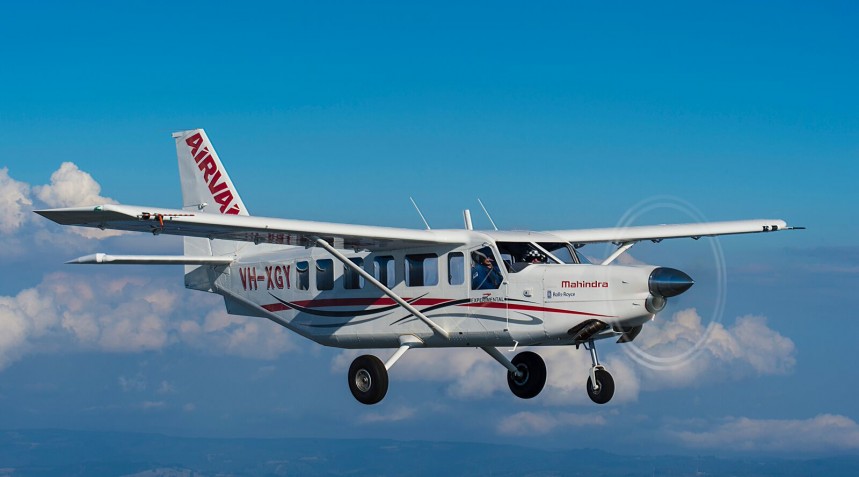Australia’s first 10-seater, single-engine turboprop aircraft has received long-awaited type certification from the Civil Aviation Safety Authority and the US Federal Aviation Administration ahead of delivery early next year.
The AIRVAN 10, a product of Mahindra Aerospace’s Australian-based subsidiary GippsAero, is powered by an economical 450 horsepower Rolls-Royce M250 engine and is the big sister of the piston- engine and turbocharged AIRVAN 8s, more than 220 of which now operate in 29 countries.
The new utility aircraft can be quickly converted from a passenger role to take cargo and is targeted at regional operators in countries such as the US, India and Africa. The certification breakthrough was announced at this week’s Paris Air Show.
The Airvan 10 first flew in 2012 and is designed to cruise at 145knots (269kmh) with a ceiling of 20,000ft and a range of 550 nautical miles (1019kms) with a one-hour fuel reserve. A maximum take-off weight of 4750lbs (2,155kg) gives a full-fuel payload of 1400lbs, according to a company brochure.
"We feel proud in achieving this milestone of dual certification for our Airvan 10,’’ Mahindra Aerospace chief executive Arvind Mehra said in a statement. “This not only allows us to expand our existing markets but also provides a much-needed boost to regional low-cost connectivity to those areas in the world where AvGas is a constraint.’’
The company says the AIRVAN 10, developed in the Australian state of Victoria, will now enter consultation and operational trials with lead customers and others to help refine its roles as a utility aircraft. It designed with
GippsAero chief executive Keith Douglas said there was significant demand for this type of aircraft in the general aviation market and the company was confident it could fill that gap with a cost-effective solution.
"For our Australia and India teams, this is a much-deserved recognition,’’ he said. “This now gives us an opportunity to progress into the next stage of the program which will address customer and region-specific enhancements to the aircraft.
“We expect delivery of the first aircraft to identified customers by early 2018.”
























